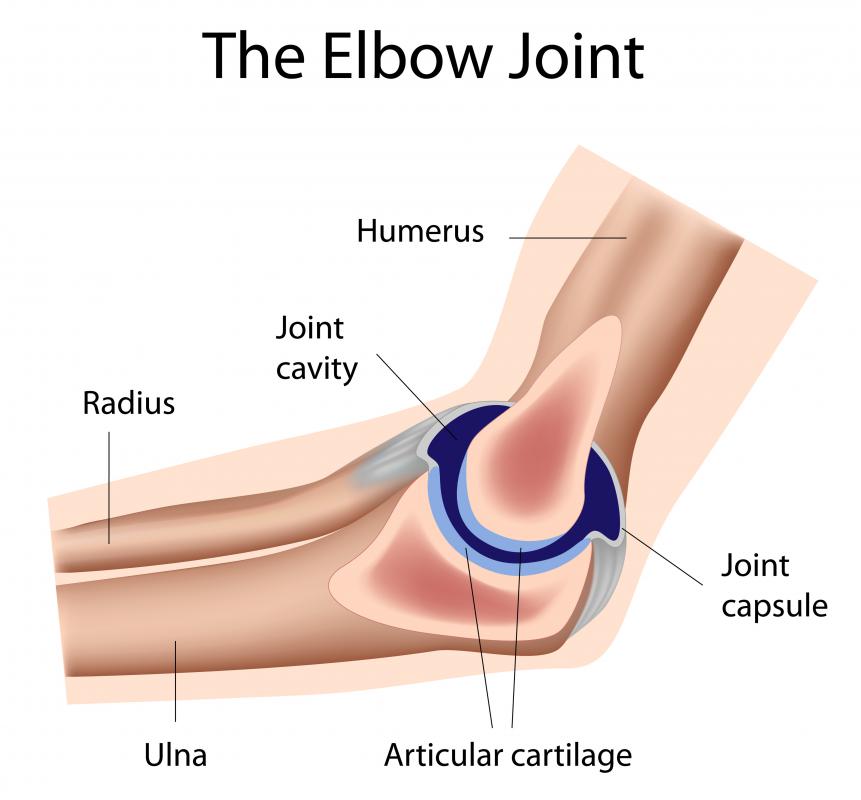At WiseGEEK, we're committed to delivering accurate, trustworthy information. Our expert-authored content is rigorously fact-checked and sourced from credible authorities. Discover how we uphold the highest standards in providing you with reliable knowledge.
What is Hemarthrosis?
Hemarthrosis is the medical term for bleeding in the joints, and is one of the most common causes of joint pain and swelling. The condition typically occurs following an injury to the joint, although it can happen spontaneously in patients with hemophilia. Individuals taking blood thinning medications such as Warfarin™ are also prone to developing hemarthrosis.
Other hemarthrosis causes include osteoarthritis, vascular damage and tumors. Patients with bleeding disorders are more likely to bleed into the joint spaces, but the condition is most frequently experienced after some type of joint trauma. Individuals with osteoarthritis often develop hemarthrosis after a knee joint arthroplasty, a surgical procedure in which the joint surface is replaced, remolded or realigned.

Symptoms include severe pain and swelling of the affected joint, and excessive bruising and broken blood vessels around the joint. Diagnosis of the condition usually begins with a physical exam, and may also include joint aspiration and x-rays. Joint aspiration is a process in which fluid is collected from the joint capsule through a syringe. If the collected fluid is abnormal or appears red, pink or brown in color, the patient is typically diagnosed with the condition.

The condition can be treated, although the treatment is dependent upon the underlying cause. In mild cases of hemarthrosis, rest and the use of crutches or a sling may be satisfactory to stop the bleeding and reduce symptoms. If the problem is caused by hemophilia or other bleeding disorders, these will be treated with intravenous clotting agents, prescription medications or even gene therapy. In most cases, once the underlying disorder is treated, bleeding into the joint will cease to be a problem.

If the problem is caused by arthritis or unknown factors, a physician may choose different treatment options. The removal of the joint lining, also known as a synovectomy, may be used to treat the condition. If this treatment is impractical or ineffective, an osteotomy might be performed. An osteotomy consists of removing a wedge of bone near the affected joint to force a shift of weight away from the damaged area.

In extreme cases, complete joint replacement may be required. Joint replacement is a surgical procedure in which the entire joint or part of the joint is replaced with an artificial surface. Physical therapy may be necessary after treatment to allow for regular movement of the joint, and medication may be required to prevent further episodes of bleeding into the joint.
AS FEATURED ON:
AS FEATURED ON:
















Discussion Comments
My husband was injured at work while lifting a piece of steel. He had a fractured ankle and his left knee was more swollen than I thought was possible. While we were in the emergency room, the doctor said that he had fluid on his knee and that they needed to aspirate it through a needle. When they started pulling fluid off his knee, it was somewhat pinkish at first but then became bloody looking.
The doctor diagnosed him as having traumatic hemarthrosis due to his injuries. His knee was extremely swollen and looked deformed from all of the fluid. He was referred to an orthopedic surgeon who performed a synovectomy.
He is still in physical therapy but doing much better.
Post your comments